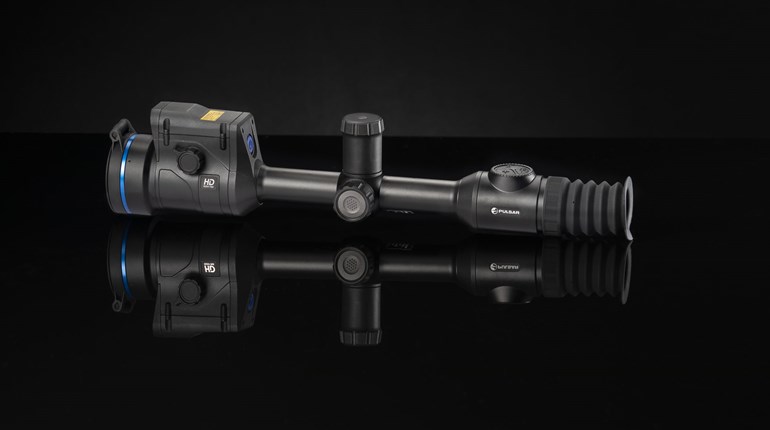
“Last-minute revival that it was, Camp Perry 1946 was a promising rebirth of the world’s biggest shooting carnival … it was still Camp Perry. It would take more than a war to change that.”
—The American Rifleman, October 1946
“Camp Perry Again!” was the headline added to the NRA’s June 1946 issue of Tournament News as it was going to press, followed by one in the July 1946 issue of The American Rifleman that read “Shooting Classic Revived After Wartime Suspension.” Confirmation about the 1946 National Matches did not come until shortly before the August start date, and the program was without high power competition or the National Board team pistol event, but the return of the National Matches at Camp Perry—in any capacity—was considered a triumph.

Competitors in the year 1946 experienced a Camp Perry just months removed from its days as a prisoner-of-war camp and the effects of such made for a rather sparse match environment. In addition to tents, a wide tract of hutments greeted the shooters and no squaw camp or family housing was provided. The clubhouse was closed, no 200-yard firing took place due to personnel restrictions and, because of the late match dates, no junior camps were conducted.
“Nobody seems to know very much about the future of Camp Perry but there are stories that Ohio is going to make a State Park out of it.”
—Frank Kahrs column in Remington News, September 1946
The program consisted of a Small Arms Firing School, the NRA pistol and smallbore championships, as well as the National Trophy Individual Pistol Match. Executive Officer Brig. Gen. Sidney Hinds oversaw a schedule with more than twice the number of pistol matches than in 1941 due primarily to the addition of specific class matches. The smallbore program was expanded as well when Tyro, Marksman 1st Class (added in 1946 to help new shooters transition in the sport), Expert and Master class matches were added to the existing Sharpshooter and Marksman events. An offshoot of this new set-up was the required use of NRA classification cards among National Match competitors.
The NRA continued its pre-war courtesy and provided trips to the National Matches for the five winners (Match Winner, High Expert, Sharpshooter, Marksman and Marksman First Class) from each region—80 in all—who also competed in a special team match against each other while at Camp Perry in 1946.
The absence of a high power program allowed for expanded pistol and smallbore phases, and handgunners competed on an enlarged range of 150 targets that featured new “simple” targets installed by the NRA Range Planning Section. Harry Reeves of Detroit, Michigan, didn’t miss a beat from the break in competition and defended his 1941 national pistol title with a 2586 score for his third straight win. Additionally, Alice Matthews of Broomall, Pennsylvania, won the women’s crown and Californian Jacob Engbrecht won the lone national trophy match.
In smallbore, Garrett Wayne Moore of Washington, Pennsylvania, added his name to the winner’s register and didn’t let the effects of an artificial leg or borrowed rifle deny him the honor. In 1947, Moore showed that his 1946 win was no fluke, as he successfully defended his National Smallbore Championship title. Moore was also a proficient four-position gallery shooter. The shooting Moore family was to be prominent in the coming years, with cousin Robert Moore winning the first Indoor Championship in 1952 and the Smallbore Prone Championship at Camp Perry in 1958. Robert Moore’s wife, Bertie, would win the Women’s title in 1957, also serving as a firing member and official of the Randle Team.

“The girls are getting better every day—on the target range, that is.”
—NRA’s Tournament News, September 1946
On the women’s side in smallbore, fellow Pennsylvanian Adelaide McCord claimed victory and became the first woman to place three times on a Dewar team. An impressive performance was turned in at the hands of a young Arthur Cook of Washington, D.C., who, at age 18, turned heads in 1946 when he finished 10th overall, won the junior title, joined the “400 Club” and helped in the victorious U.S. Dewar effort with his score of 399.
1946 National Matches Fact
The year 1946 marked the first time that an all-women police team competed at the National Matches. The unit from New York posted scores in two .22 caliber events and one revolver event. Team members were Marion Bushy, Morrice Baer, Eva Hanson, Adelaide Knowles and Louise Wagner.

































